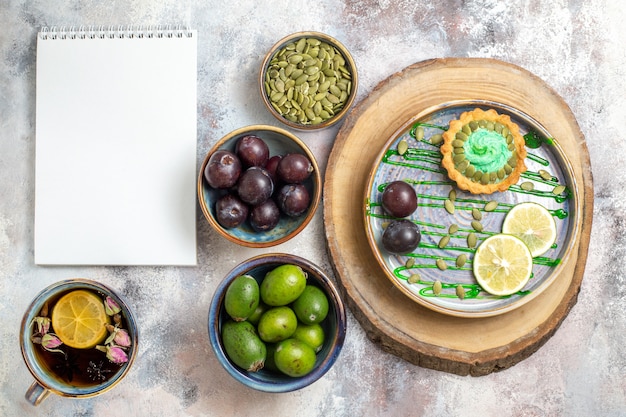The Science of Food Pairing
Have you ever wondered why some foods just seem to go together? Why a perfectly grilled steak is elevated by a rich, full-bodied wine, or why the sweetness of a ripe mango is balanced by the spiciness of a fresh chili pepper? The answer lies in the science of food pairing, a fascinating field that combines chemistry, psychology, and culinary art to unlock the secrets of flavor compatibility.
The Chemistry of Flavor
Flavor is a complex phenomenon that involves the interaction of multiple chemical compounds in food. These compounds, known as flavor molecules, are responsible for the aroma, taste, and texture of a particular food. When we eat, our taste buds detect these molecules and send signals to our brain, which interprets them as specific flavors.
One of the key principles of food pairing is the concept of complementary flavor compounds. This means that foods with complementary flavor profiles can enhance and balance each other, creating a harmonious and complex flavor experience. For example, the sweetness of a ripe tomato is balanced by the acidity of a fresh basil leaf, creating a classic flavor combination that is both refreshing and savory.
"The key to successful food pairing is to find ingredients that complement each other in terms of flavor, texture, and aroma," says Chef Thomas Keller, renowned for his Michelin-starred restaurants The French Laundry and Per Se. "When you combine ingredients in a way that creates harmony and balance, you can create truly memorable dishes."
The Psychology of Taste
But food pairing is not just about chemistry – it's also about psychology. Our brains play a significant role in how we perceive flavor, and our emotions, memories, and cultural backgrounds all influence our food preferences.
One of the most interesting aspects of the psychology of taste is the concept of flavor association. This refers to the way in which our brains associate certain flavors with specific emotions, memories, or experiences. For example, the smell of freshly baked cookies may evoke memories of childhood and feelings of warmth and comfort.
Food pairing can also be influenced by cultural and social factors. Different cultures have their own unique flavor profiles and pairing traditions, and social norms and expectations can also play a role in how we experience flavor. For example, in many Asian cultures, the combination of sweet and sour flavors is a classic pairing that is both refreshing and balancing.
The Art of Food Pairing
So how can you apply the science of food pairing to your own cooking? Here are a few tips to get you started:
- Experiment with complementary flavor compounds: Try pairing foods with complementary flavor profiles, such as sweet and savory, or spicy and sour.
- Consider the texture and aroma of ingredients: Texture and aroma can play a significant role in how we experience flavor, so try combining ingredients with different textures and aromas to create a harmonious and complex flavor experience.
- Don't be afraid to try new combinations: Food pairing is all about experimentation and creativity, so don't be afraid to try new and unusual combinations.
Some examples of successful food pairings include:
- Grilled steak with roasted garlic and rosemary: The rich, savory flavor of the steak is balanced by the pungency of the garlic and the herbaceousness of the rosemary.
- Pan-seared salmon with lemon and capers: The bright, citrusy flavor of the lemon is balanced by the salty, tangy flavor of the capers, creating a refreshing and savory flavor combination.
- Roasted chicken with apples and onions: The sweetness of the apples and the savory flavor of the onions balance the richness of the chicken, creating a classic flavor combination that is both comforting and satisfying.
Here are some ingredients that can add a burst of flavor to your dishes:
- Herbs: basil, rosemary, thyme, oregano
- Spices: cumin, coriander, paprika, chili powder
- Citrus: lemon, lime, orange, grapefruit
- Umami: mushrooms, soy sauce, fish sauce, miso paste
- Sweetness: honey, maple syrup, sugar, fruit
Case Studies
Let's take a look at a few case studies of successful food pairings:
- The classic combination of peanut butter and jelly: This pairing is a classic example of complementary flavor compounds. The rich, nutty flavor of the peanut butter is balanced by the sweet, fruity flavor of the jelly, creating a harmonious and satisfying flavor combination.
- The combination of blue cheese and pears: This pairing is a great example of the psychology of taste in action. The strong, pungent flavor of the blue cheese is balanced by the sweet, refreshing flavor of the pears, creating a flavor combination that is both surprising and delightful.
- The combination of chili peppers and chocolate: This pairing is a great example of the art of food pairing in action. The spicy, smoky flavor of the chili peppers is balanced by the rich, sweet flavor of the chocolate, creating a flavor combination that is both complex and intriguing.
The Thrill of the Unknown
Just as a perfectly paired dish can evoke a sense of excitement and satisfaction, the thrill of the unknown can be a powerful draw in other areas of life. Take, for example, the rush of adrenaline that comes with playing games of chance. The uncertainty of the outcome, the possibility of a big win, and the thrill of the unknown can all combine to create a truly exhilarating experience. And just as a skilled chef must balance flavors and textures to create a harmonious dish, a skilled gamer must balance risk and reward to come out on top. For those who enjoy the thrill of the unknown, Badger Miners offers a unique and exciting experience that's sure to satisfy. With its unique blend of chance and strategy, it's the perfect way to add a little excitement to your day. Whether you're a seasoned gamer or just looking for a new adventure, this game is sure to deliver.
Experimenting with Food Pairing
The best way to learn about food pairing is to experiment and try new combinations. Don't be afraid to try unusual pairings and flavor combinations – you never know what you might discover!
Here are a few tips for experimenting with food pairing:
- Start with simple combinations: Try pairing two or three ingredients together to see how they interact.
- Experiment with different flavor profiles: Try pairing ingredients with different flavor profiles, such as sweet and savory, or spicy and sour.
- Consider the texture and aroma of ingredients: Texture and aroma can play a significant role in how we experience flavor, so try combining ingredients with different textures and aromas to create a harmonious and complex flavor experience.
By experimenting with food pairing and trying new combinations, you can unlock the secrets of flavor compatibility and create truly memorable dishes. So don't be afraid to get creative and try new things – the world of food pairing is full of endless possibilities!

